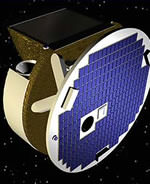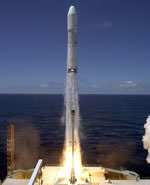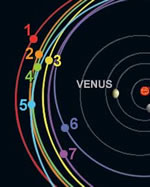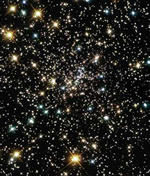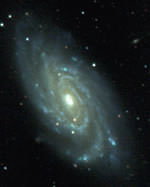
Image credit: SDSS
The age of star formation in the Universe is drawing to a close, according to a new report from the Sloan Digital Sky Survey. A team of astronomers analyzed the colour of an enormous number of nearby galaxies and found that they contained less young stars than more distant galaxies. Since light takes so long to travel, the more distant galaxies are seen as they appeared many billion years ago. The number of new stars being formed has been on the decline since about 6 billon years ago, when our own Sun formed.
The universe is gently fading into darkness according to three astronomers who have looked at 40,000 galaxies in the neighbourhood of the Milky Way. Research student Ben Panter and Professor Alan Heavens from Edinburgh University’s Institute for Astronomy, and Professor Raul Jimenez of University of Pennsylvania, USA, decoded the “fossil record” concealed in the starlight from the galaxies to build up a detailed account of how many young, recently-formed stars there were at different periods in the 14-billion-year existence of the universe. Their history shows that, for billions of years, there have not been enough new stars turning on to replace all the old stars that die and switch off. The results will be published in the Monthly Notices of the Royal Astronomical Society on 21 August 2003.
“Our analysis confirms that the age of star formation is drawing to a close”, says Alan Heavens. “The number of new stars being formed in the huge sample of galaxies we studied has been in decline for around 6 billion years – roughly since the time our own Sun came into being.”
Astronomers already had evidence that this was the case, mainly from observing galaxies so far away that we see them as they were billions of years ago because of the great length of time their light has taken to reach us. Now the same story emerges strongly from the work of Panter, Heavens and Jimenez, who for the first time approached the problem differently and used the whole spectrum of light from an enormous number of nearby galaxies to get a more complete picture.
Galaxies shine with the combined light of all the stars in them. Most of the light from young stars is blue, coming from very hot massive stars. These blue stars live fast and die young, ending their lives in supernova explosions. When they have gone, they no longer outshine the smaller red stars that are more long-lived. Many galaxies look reddish overall rather than blue – a broad sign that most star formation happened long ago.
In their analysis, Panter, Heavens and Jimenez have used far more than the simple overall colours of the galaxies, though. The spectrum observations they used come from the Sloan Digital Sky Survey and the volume of data involved was so vast, that the researchers had to develop a special lossless data compression method, called MOPED, to allow them to analyse the sample in a reasonable length of time, without losing accuracy.
Original Source: RAS News Release

